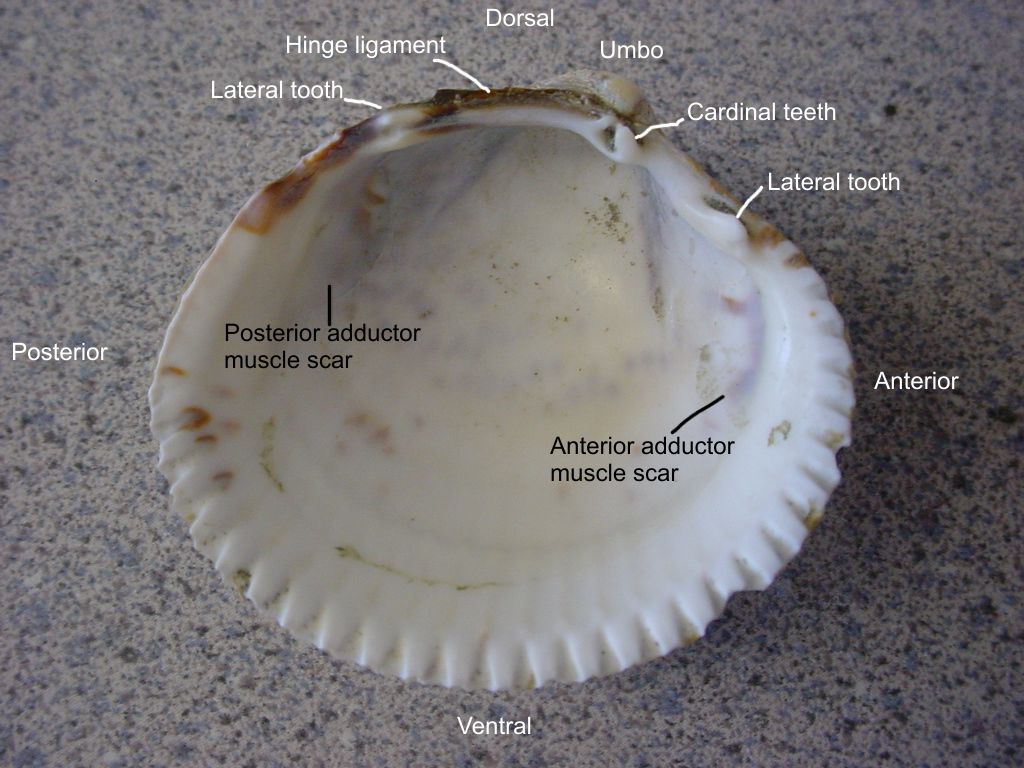Clinocardium nuttallii (Conrad, 1837)Common name(s): Heart cockle, Nuttall's cockle, basket cockle |
|
| Synonyms: Cardium orbis | 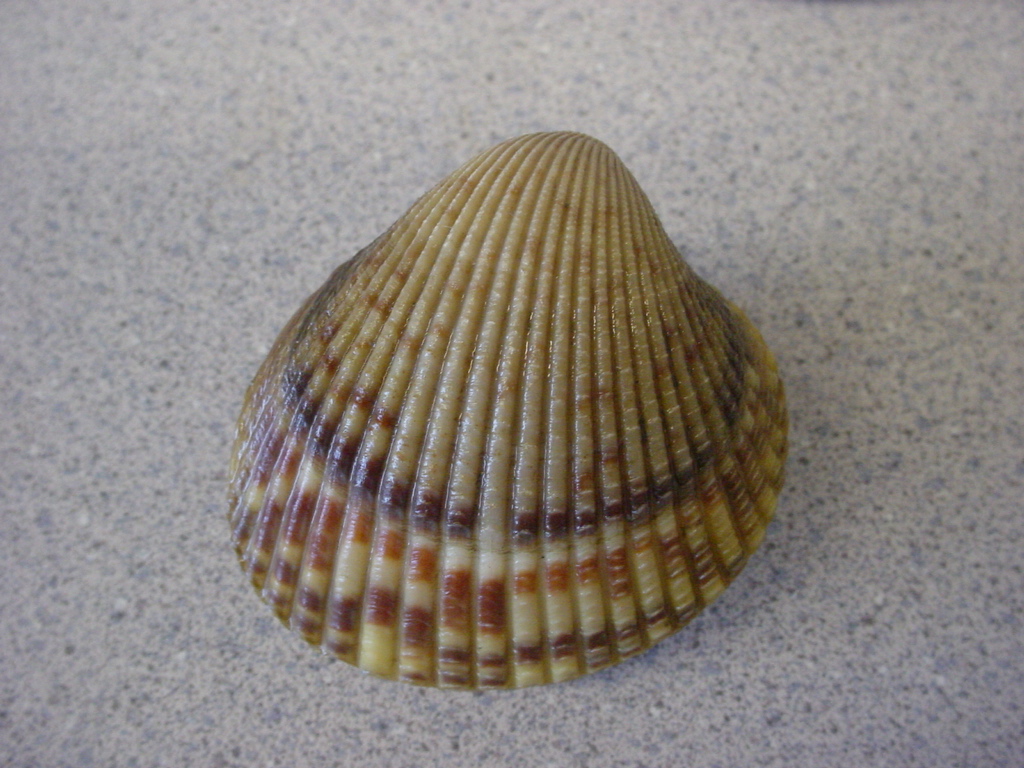 |
| Phylum Mollusca
Class Bivalvia Subclass Heterodonta Order Veneroida Family Cardiidae |
|
| Clinocardium nuttallii, 4 cm long and 4.2 cm high. | |
| (Photo by: Dave Cowles, July 2005) | |
How to Distinguish from Similar Species: Other cockles in the area have an area in the posterior quarter that has prominent concentric ridges as well as radial ribs, or are wider than high; and do not get larger than about 4 cm. The littleneck clam Protothaca staminea has much less prominent radial ribs and the ventral margin does not undulate.
Geographical Range: Bering Sea to San Diego, CA; Japan; very common in Rosario area.
Depth Range: Low intertidal to 200 m; mostly intertidal and shallow subtidal
Habitat: Fine sediment, especially muddy fine sand (not plain mud). Lies barely buried in the sediment. Often in eelgrass beds.
Biology/Natural
History:
Growth rings may
be prominent, especially in the northern parts of its range, as this
species
nearly ceases feeding in winter. Yearly growth lines are much
less
prominent farther south, but tidal cycle growth lines can often be
seen.
Mantle
margin has
tiny tentacles
with tiny eyes. Pumps 2.51 liters of water per hour per gram
body
weight. Predators include Pycnopodia
helianthoides, Pisaster
brevispinus, Cancer
magister, and gulls. The cockle has a
strong escape response
to Pycnopodia--rapidly
extending its foot and jumping away (movie).
May be a source of paralytic shellfish poisoning (PSP) for
humans.
A simultaneous hermaphrodite
(has both functional male and female gonads at the same
time).
In Puget Sound they mature in their second year and spawn in July and
August.
Live 15-19 years in Alaska. May contain small pea crabs such
as Pinnixa
faba inside the mantle cavity.
| Return to: | |||
| Main Page | Alphabetic Index | Systematic Index | Glossary |
References:
Dichotomous Keys:Flora and Fairbanks, 1966 (as Cardium corbis)
Kozloff 1987, 1996
Smith and Carlton, 1975
General References:
Brusca
and Brusca, 1978
Harbo,
1997
Harbo,
1999
Johnson
and Snook (1955) (as Cardium corbis)
Kozloff,
1993
McConnaughey
and McConnaughey, 1985
Morris,
1966
Morris
et al., 1980
Niesen,
1994
Niesen,
1997
O'Clair
and O'Clair, 1998
Ricketts
et al., 1985
Sept,
1999
Scientific Articles:
Gallucci, V. F., and B. B. Gallucc, 1982i. Reproduction and ecology of the hermaphroditic cockle Clinocardium nuttallii (Bivalvia: Cardiidae) in Garrison Bay. Marine Ecology Progress Series 7: pp.137-145.
Lewis,
Nathaniel S., and Theodore H. DeWitt, 2017. Effect of green
macroalgal blooms on the behavior, growth, and survival of cockles Clinocardium nuttallii in Pacific NW estuaries. Marine Ecology Progress Series 582: pp 105-120.
General Notes and Observations: Locations, abundances, unusual behaviors:
We find this species to be the most commonly found bivalve in western Padilla Bay, along the east side of March Point.
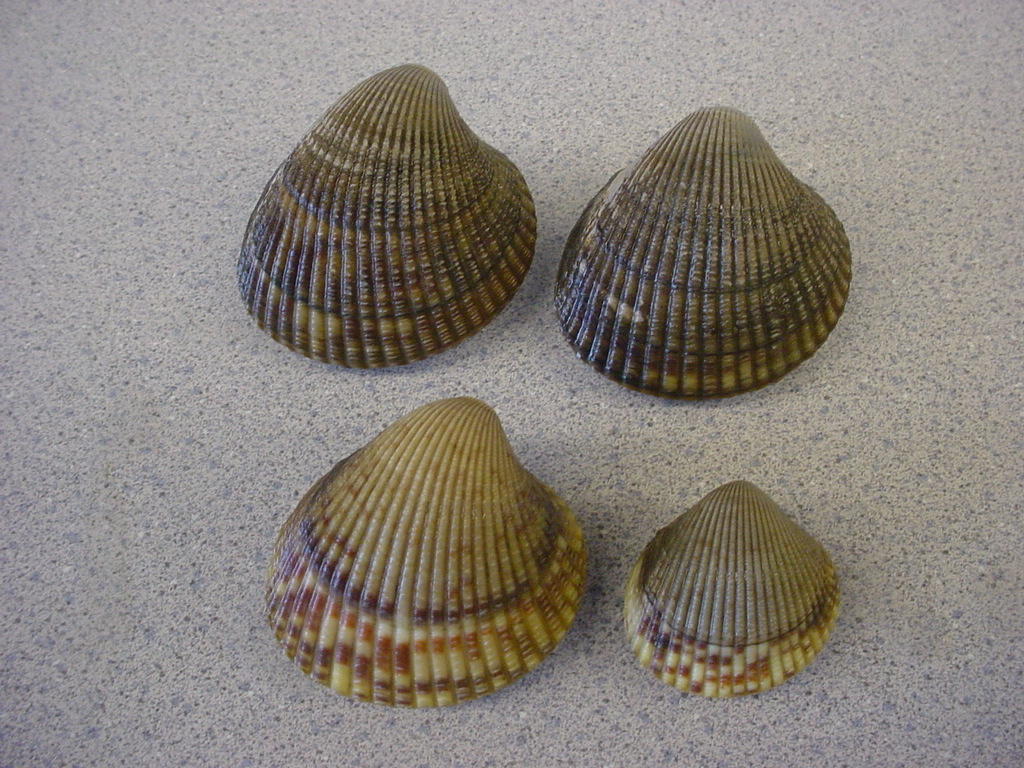
Clinocardium nuttallii shells have various
brown bands and blotches
on the valves.
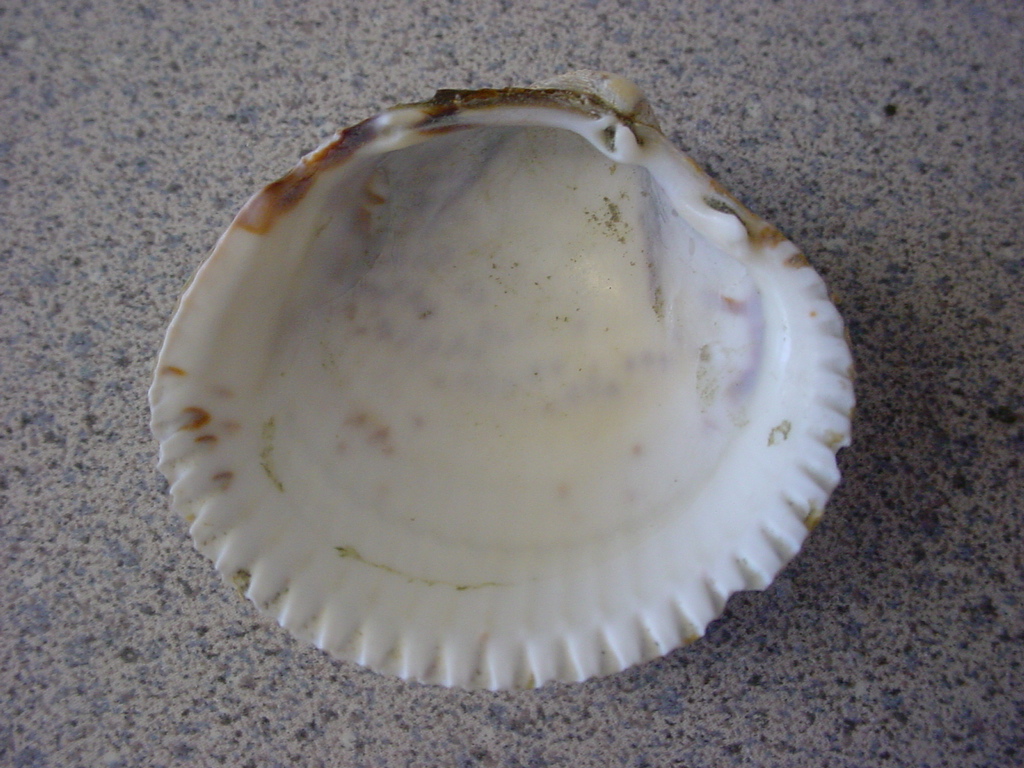
Cockles have two adductor
muscle scars of nearly equal size, and cardinal
and lateral
teeth. Photo of Clinocardium nuttallii
shell by Dave Cowles,
July 2005
The same photo as above, with many of the features labeled.
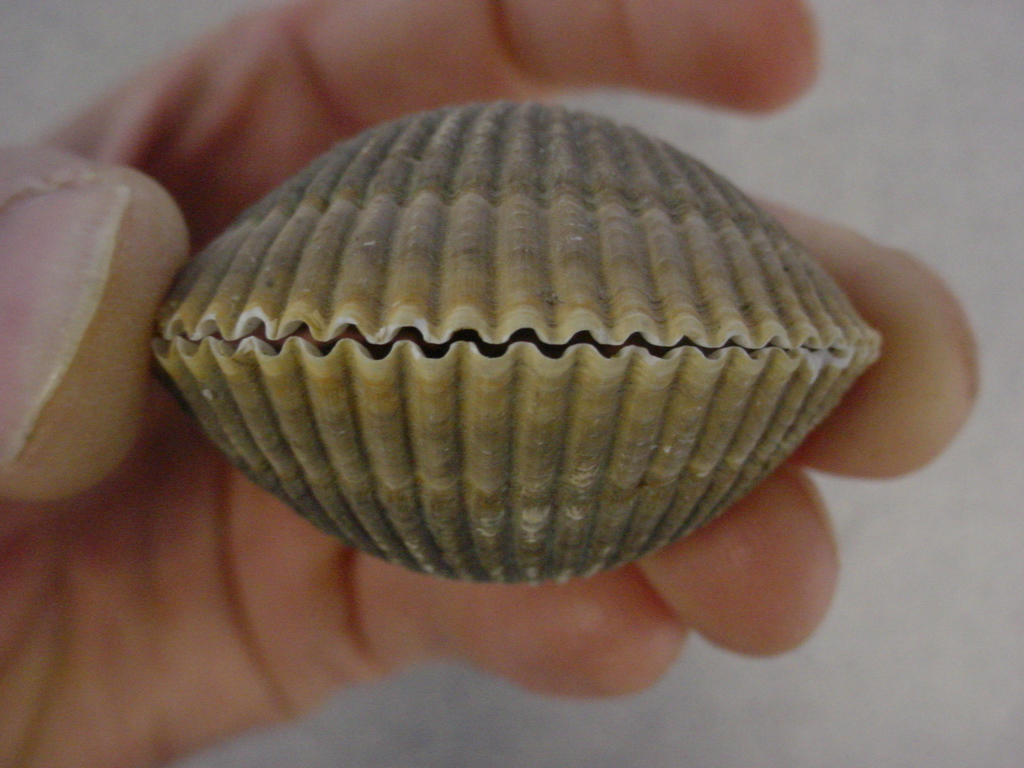
The radial
ribs interlock as undulations along the ventral
margin, which likely strengthens the shell by making the two valves
difficult
to twist apart. I am holding the two valves
slightly apart here to clearly show the gap--in full closure they
interlock
tightly. Photo by Dave Cowles, July 2005
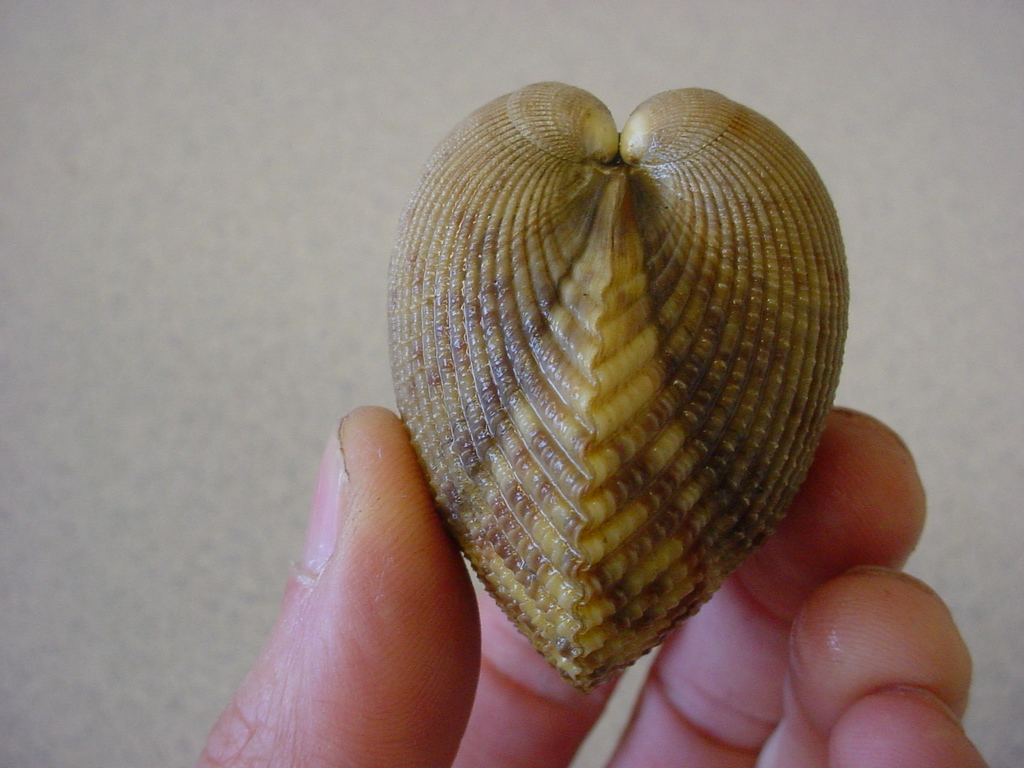
A side view shows why this cockle is called the heart cockle.
Photo by Dave Cowles, July 2005
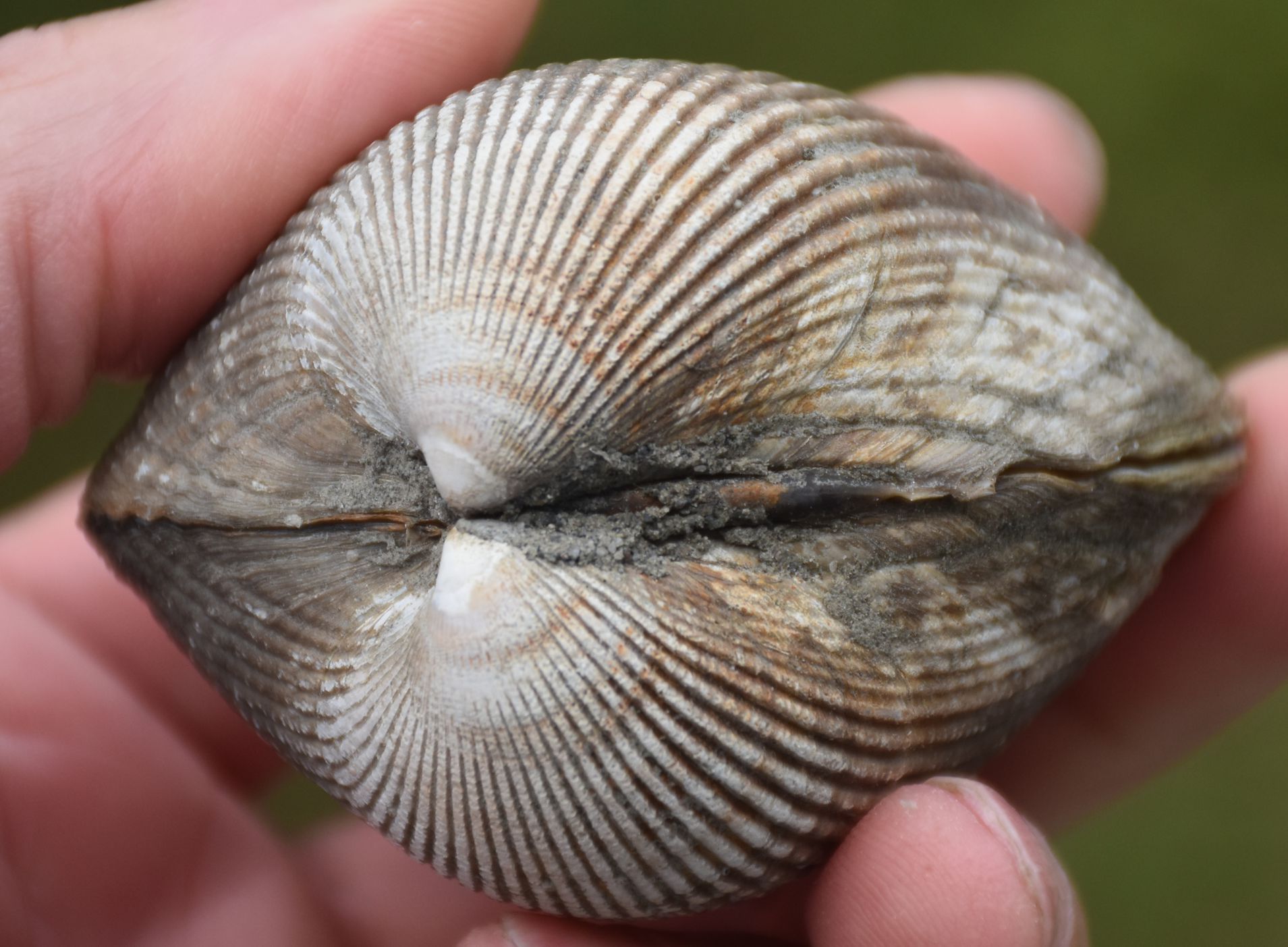
This dorsal
view shows the umbones
and external hinge.
Photo by Dave Cowles, June 2020
Clinocardium nuttallii has short
siphons, mainly white.
Note that the incurrent
siphon is larger than the excurrent
siphon, as is common in many bivalves.
Photo by Dave Cowles, July 2007
This species jumps rapidly by extending its foot when it
senses predatory
seastars such as Pycnopodia
helianthoides or Pisaster
ochraceus. Click here for
a movie of the jump near Pycnopodia.
Authors and Editors of Page:
Dave Cowles (2005): Created original page
